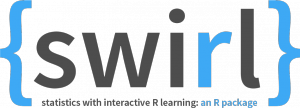Exponential water tank
Posted by Armando Brito Mendes | Filed under estatística, materiais ensino, visualização
Hibai Unzueta, based on a paper by Albert Bartlett, demonstrates exponential growth with a simple animation. It depicts a man standing in a tank with finite capacity and water rising slowly, but at an exponential rate.
Our brains are wired to predict future behaviour based on past behaviour (see here). But what happens when something growths exponentially? For a long time, the numbers are so little in relation to the scale that we hardly see the changes. But even at moderate growth rates exponential functions reach a point where the numbers grow too fast. Once we confirm that our predictions about the future have failed, very little time to react may be left.
All looks safe at first, because the water rises so slowly, but it seems to rise all of a sudden. Oh, the suspense. What will happen to cartoon pixel man?
Tags: definição, inferência
Introduction to social network methods
Posted by Armando Brito Mendes | Filed under ARS - SNA, materiais ensino
Robert A. Hanneman and Mark Riddle
Introduction to social network methods
Table of contents
About this book
This on-line textbook introduces many of the basics of formal approaches to the analysis of social networks. The text relies heavily on the work of Freeman, Borgatti, and Everett (the authors of the UCINET software package). The materials here, and their organization, were also very strongly influenced by the text of Wasserman and Faust, and by a graduate seminar conducted by Professor Phillip Bonacich at UCLA. Many other users have also made very helpful comments and suggestions based on the first version. Errors and omissions, of course, are the responsibility of the authors.
You are invited to use and redistribute this text freely — but please acknowledge the source.
Hanneman, Robert A. and Mark Riddle. 2005. Introduction to social network methods. Riverside, CA: University of California, Riverside ( published in digital form athttp://faculty.ucr.edu/~hanneman/ )
Table of contents:
Preface
1. Social network data
2. Why formal methods?
3. Using graphs to represent social relations
4. Working with Netdraw to visualize graphs
5. Using matrices to represent social relations
6. Working with network data
7. Connection
8. Embedding
9. Ego networks
10. Centrality and power
11. Cliques and sub-groups
12. Positions and roles: The idea of equivalence
13. Measures of similarity and structural equivalence
14. Automorphic equivalence
15. Regular equivalence
16. Multiplex networks
17. Two-mode networks
18. Some statistical tools
After word
Bibliography
Tags: ARS\SNA applicações, ARS\SNA intro, grafos
IFORS Simulation
Posted by Armando Brito Mendes | Filed under estatística, Investigação Operacional, materiais ensino
The following 6 pages are in this category, out of 6 total.
D
E
M
S
T
Tags: otimização, software de otimização
IFORS Queueing_Theory
Posted by Armando Brito Mendes | Filed under Investigação Operacional, materiais ensino
The following 14 pages are in this category, out of 14 total.
Tags: otimização, software de otimização
IFORS Network_Flow_Problems
Posted by Armando Brito Mendes | Filed under Investigação Operacional, materiais ensino, planeamento
The following 10 pages are in this category, out of 10 total.
ACFG |
IMN |
N cont.T |
Tags: grafos, otimização, software de otimização
IFORS Linear_Programming
Posted by Armando Brito Mendes | Filed under Investigação Operacional, materiais ensino
The following 16 pages are in this category, out of 16 total.
DL |
L cont. |
MORT |
Tags: otimização, software de otimização
IFORS Decision Analysis & DSS
Posted by Armando Brito Mendes | Filed under ADM - multicritério, Investigação Operacional, materiais ensino
The following 28 pages are in this category, out of 28 total.
Tags: decisao em grupo, decisão médica
A fábrica de Lego e o Lean Six Sigma
Posted by Armando Brito Mendes | Filed under materiais ensino, planeamento, videos
Neste vídeo, uma fábrica de Lego cuja situação era de caos e desastre torna-se um exemplo de gestão, após a aplicação dos conceitos de Lean Six Sigma.
Tags: análise de sistemas, definição, gestão de projetos, modelos empresariais
Learn R interactively with the swirl package
Posted by Armando Brito Mendes | Filed under estatística, materiais ensino, software
swirl is a software package for the R statistical programming language. Its purpose is to teach users statistics and R simultaneously and interactively.
Tags: data mining, desnvolvimento de software, R-software, software estatístico
introducing R to a non-programmer in one hour
Posted by Armando Brito Mendes | Filed under estatística, materiais ensino, software
Biostatistics PhD candidate Alyssa Frazee was tasked with teaching her sister, an undergraduate in sociology, how to use R. She had only one hour.
Once you load in a dataset, things start to get fun. We learned a whole bunch of stuff from this data frame, like how to do basic tabulations and calculate summary statistics, how to figure out if you have missing data, and how to fit a simple linear model. This part was pretty fun because my sister started leading the session: instead of me saying “I’m going to show you how to do this,” it was her asking “Hey, could we make a scatterplot?” or “Do you think we could put the best-fit line on that plot?” I was really glad this happened — I hope it meant she was engaged and enjoying herself!
This is the nice thing about R. There are so many built-in functions and packages that you can get something useful with a few lines of code, and you don’t really even have to know what a function is to get started (although you should eventually). Then you can go as far down the rabbit hole as you want.
Tags: análise de dados, bioinformatica, Estat Descritiva, R-software, software estatístico



